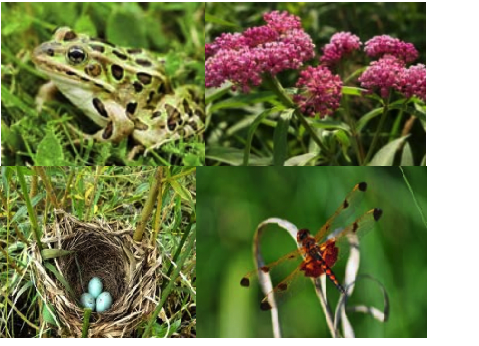What are wetlands? Wetlands are also known as swamps, bogs and marshes. They are the areas where land and water meet. There are three components for a wetland, They:
- have hydric soils (soils that have developed under wet conditions)
- have water present during at least part of the year
- contain water-loving plants which have adapted to changes in water levels.
Wetlands can look very different. Most people are familiar with cattail or lily pad wetlands found in areas with standing water. But wetlands may also look like grassy meadows, brushy fields or mature forests. In fact, 75% of Michigan’s remaining wetlands are forested areas.
Why are wetlands wonderful? Everyone benefits from healthy wetlands. They:
- keep our water clean
- provide wildlife habitat
- protect houses, businesses and roads from flooding
- guard against erosion of stream banks and lakeshores
- make great outdoor classrooms
Where are wetlands? Wetlands are found in every state and on every continent except Antarctica. In the St. Joseph River Watershed, wetlands are found in lowland areas, farm fields, forests and along rivers, streams and lakes. Wetlands vary in size: some may only be a few hundred square feet and in the middle of a forest where water collects, or some can be several hundreds to thousands of acres along the banks of a river or lake.
Why worry about wetlands?
- Despite all the benefits provided by wetlands, the United States loses about 60,000 acres of wetlands each year.
- 53% of the wetlands have been filled or drained in the St. Joseph River Watershed in the last 200 years.
- Wetland loss continues to degrade and threaten the water resources (streams, rivers, lakes and drinking water) in the St. Joseph River Watershed.
- The polluted runoff that wetlands help to filter and clean can overload and pollute these fragile areas.
- Non-native species, both plants and animals, as well as climate change, contribute to wetland degradation or loss.

Follow Us